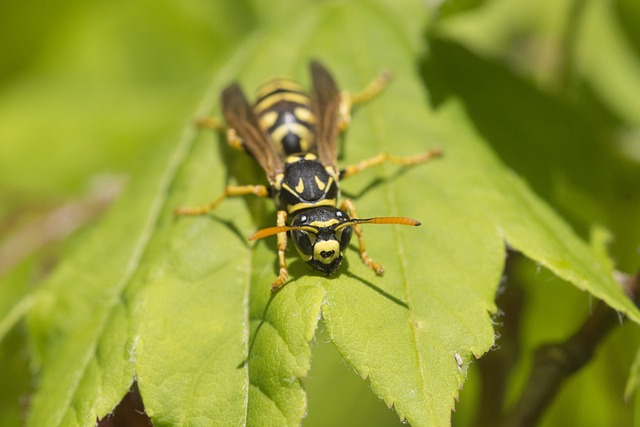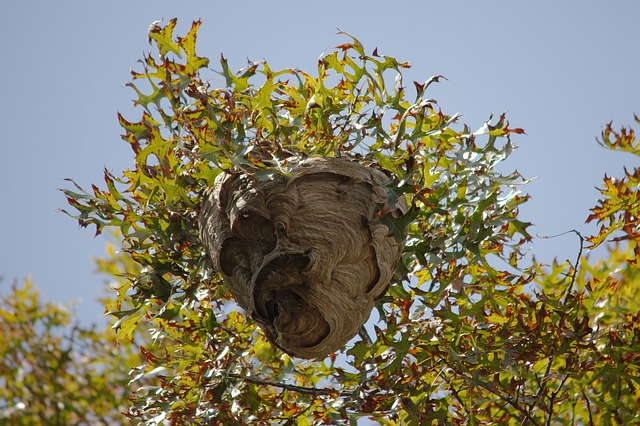When you see five or more wasps hovering over your picnic table, then those are yellowjackets!
Imagine the panic in your eyes when you’ve seen these yellowjackets freely roaming in your backyard. This time, you need to do something about it! Mind you; they can sting you back repeatedly!
In this article, we will help you find and locate a yellowjacket nest in no time. Remember, you need a professional pest control team to find their nests carefully.
Important Note: If you're tired of pests and want a reliable solution, then you should definitely consider seeking help from a professional pest control company. DIY solutions can be effective, but if you're dealing with a significant pest infestation, you don't want to rely solely on DIY methods. Pest control companies typically don't charge huge fees. You can fill out this form to receive free quotes from the top local pest control companies, and compare the quotes and see for yourself. Then, finally, your pest problems will be eliminated for good.
We got you covered on this one! But first, how can we identify a yellowjacket? Let us check that first.
Identifying Yellowjackets

Although they are far from bees, yellowjackets are often called ‘meat bees .’ although they are far from bees. In fact, yellowjackets are wasps that are also closely tied with hornets.
Most of these insects appear relatively short and stout. Their sizes are about ½ inches long, and all of them have yellow, black, and white colors surrounding their bodies.
They are aggressive and will likely sting if you try to disturb them or threaten their nests. Unlike honey bees, which can sting only once, yellowjackets can sting repeatedly!
Remember, these insects will not attack you if you are cautious and extra careful around them. A yellowjacket’s sting can be painful to children. These insects are not to be meddled with!
Yellowjackets like to scavenge for food, especially meat and sweet foods. They can be pretty aggressive and persistent in foraging for food, so you better stay out of their way.
A word of warning though, yellowjackets will more likely sting when they are swatted or disturbed.
But, these insects play an essential role in nature because they love to eat caterpillars, house flies, and other insects.
Detecting Yellowjacket’s Nest
When finding a yellowjacket’s nest, it is essential to recognize what their nests look like.
Here are some of the characteristics of yellowjacket’s nest that can help you quickly locate them. You should better take note of these signs.
- appear like papery gray balls
- commonly built as holes in the ground, like rodent burrows
- attached to eaves of buildings, decks, and tree branches
- found in empty spaces in walls/ceilings of buildings
- appear at the start of spring
Their nests appear spherical and are enclosed in a papery envelope with a small hole in the bottom that serves as the entrance of yellowjackets.
There are aerial nests and underground nests.
These nests reach up to 24 inches high and 18 inches across it. Some of these aerial nests are at least three feet off the ground, while others can even reach 60 feet off the ground.
Yellowjacket nests are built with wood fiber and stacked combs wholly enclosed with a papery envelope.
Underground nests are even difficult to locate as these can be mistaken as rodent burrows and can blend in with underground soil and dirt.
Their nests are a strong indication that yellowjackets are actively living and swarming.

Finding Nest’s Near Your Homes
Around spring and summer, young yellowjackets are growing on their nests while the adults are foraging for food or prey that they can bring back to their nests.
If you’ve seen some presence of yellowjackets outside, this means that their nests are just near your house. This time, it is crucial to carry out the necessary precautions.
Since yellowjacket builds their nests in holes in the ground, branches of trees, and even on attics, you can start inspecting these areas outside or inside your premises.
Sometimes, their nests even hand on eaves, so you should watch out for that area as well.
If yellowjackets start to cause a problem in your family, it is better to consult a professional pest control team.
Nest removal is hazardous if you just do it by yourself. It is recommended to ask for professional pest control help in removing these nests.
Yellowjackets can fly in miles, so you need not just find nests near your home but also those far away in the perimeter. You can use traps to lure yellowjacket into their nests.
Trapping or baiting yellowjacket nests require careful planning and a thorough action plan.
Remember, they can sting you repeatedly, making them dangerous to disturb or even make your presence known.
As it is highly advised to ask for professional help, you need to wait for their nest removal team and not try to remove a yellowjacket’s nest yourself.
Final Thoughts
Yellowjackets are more than just nuisance pests; they are even harmful and can sting you back repeatedly!
Hence, it is highly advisable that you need to be extra careful when you’ve found their nests and wait for a professional pest control team!
This time, you need professional help to deal with yellowjackets.
We hope that you’ve learned a thing or two on how to find a yellowjacket nest near or far away from your home.
You are better knowledgeable in locating their aerial or underground nests this time.
Remember, yellowjackets are not to be meddled with!
Thanks for reading!
